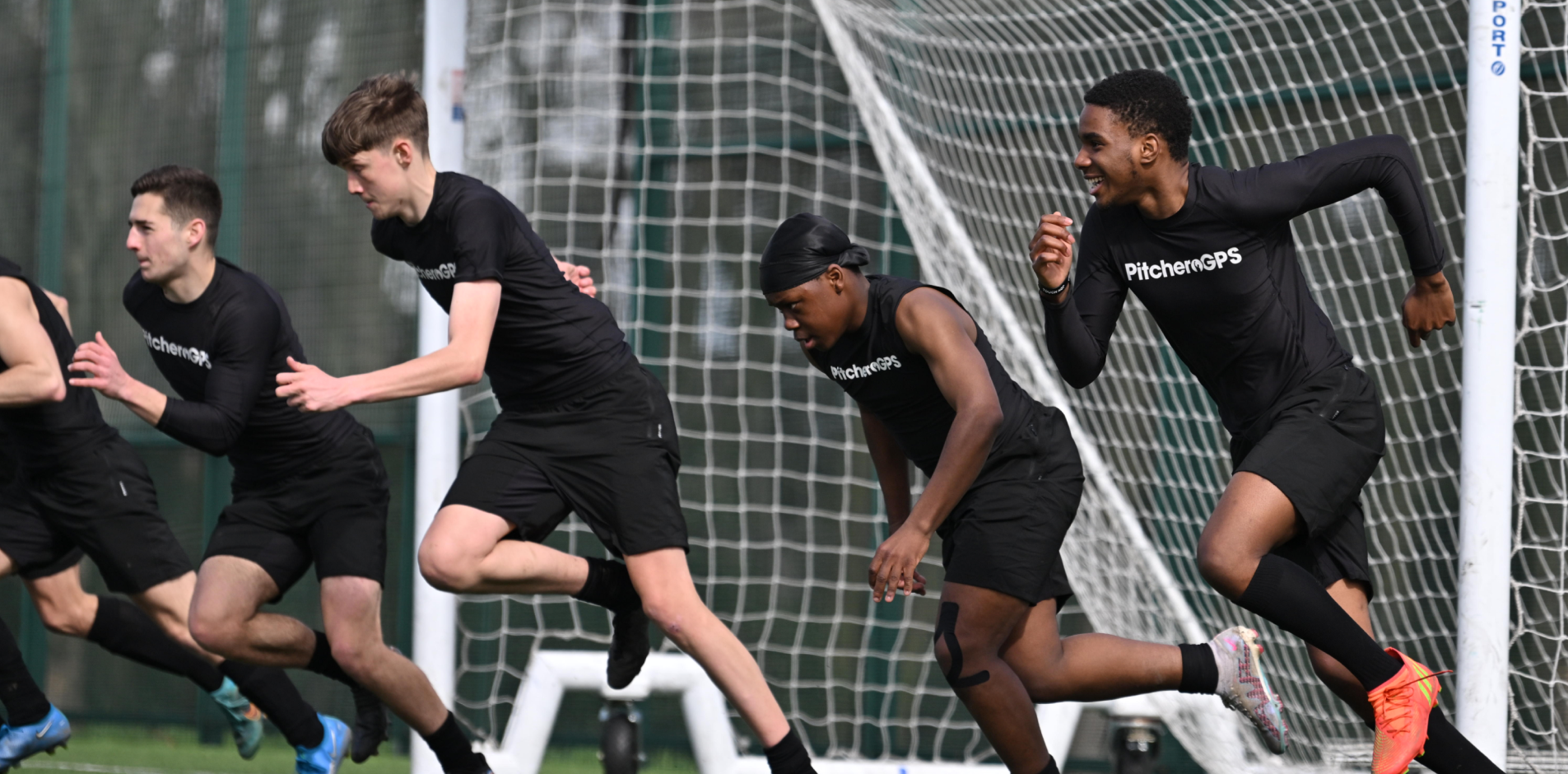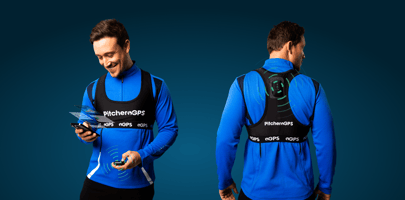Sports have always been a fascinating way for people to come together, compete, and showcase their...
The Ultimate Guide to Base Layers in Sport

In sports and outdoor activities, comfort and performance are key factors that can significantly impact your experience and results. One often overlooked yet essential aspect of athletic wear is the base layer. Base layers play a critical role in regulating your body temperature, wicking away sweat, and reducing chafing while offering a comfortable, snug fit. This guide will explore the importance of base layers in sports and provide valuable insights on choosing the right one for your needs.
Base layers, also known as compression garments or first layers, are designed to be worn directly against the skin. They are the foundation of your sports attire and can be utilised in various activities, from football and rugby to skiing and mountaineering. The primary purpose of a base layer is to manage moisture, provide insulation, and offer support to your muscles. A well-chosen base layer can significantly enhance your performance by keeping you dry, warm, and comfortable throughout your activity.
The following sections will dive deeper into base layers, discussing key factors such as material, fit, temperature regulation, and care. We will also explore innovative base layer options with built-in back pockets for GPS sports trackers, enabling you to monitor your performance while enjoying the numerous benefits of a quality base layer.
Material Matters: Choosing the Right Fabric for Your Base Layer
The fabric of your base layer plays a pivotal role in determining its effectiveness in moisture management, insulation, and comfort. With a wide variety of materials available on the market, it's crucial to understand the properties of each to make an informed choice for your specific sport or activity. This section will discuss the most common base layer fabrics and their advantages and disadvantages.
Synthetic Fabrics - Polyester, nylon, and other synthetic materials are popular choices for base layers due to their excellent moisture-wicking abilities, quick-drying properties, and durability. These fabrics are engineered to move sweat away from the skin, keeping you dry and comfortable during intense physical activities. They are also lightweight and highly breathable, making them suitable for various sports and conditions. PitcheroGPS Base Layers are made of synthetic fabrics.
Pros:
- Excellent moisture-wicking properties
- Quick-drying and highly breathable
- Durable and long-lasting
Cons:
- May retain odours over time
- Some synthetic fabrics can feel less soft and natural compared to natural fibres
Merino Wool - Merino wool has gained popularity in recent years for its exceptional natural properties. This high-quality wool comes from Merino sheep and offers superb insulation, moisture management, and odour resistance. Its natural fibres can absorb moisture and release it into the air, keeping you dry and comfortable. Moreover, Merino wool is soft, non-itchy, and naturally antimicrobial, making it an excellent choice for sensitive skin or a more natural feel.
Pros:
- Natural moisture management and insulation
- Soft, comfortable, and non-itchy
- Odour-resistant and antimicrobial
Cons:
- It can be more expensive than synthetic options
- It may not be as durable as synthetic fabrics
Silk - Silk base layers are lightweight, smooth, and soft, providing a luxurious feel against the skin. While they offer reasonable moisture-wicking capabilities, silk may not be the best choice for high-intensity activities where excessive sweating is expected. However, silk can be suitable for low-impact sports or colder conditions where additional insulation is needed.
Pros:
- Lightweight and smooth texture
- It provides a natural, luxurious feel
Cons:
- Less effective moisture management compared to synthetic materials and Merino wool
- It may require special care for washing and drying
Blended Fabrics - Blended fabrics combine the benefits of different materials, often balancing the advantages of natural and synthetic fibres. For instance, a blend of polyester and Merino wool can provide the moisture-wicking properties of synthetic fabrics with the softness and odour resistance of Merino wool. Blended fabrics can be tailored to suit specific needs and preferences, making them versatile.
Pros:
- Combines the best properties of different materials
- Offers a balance between performance and comfort
Cons:
- Quality and effectiveness may vary depending on the blend ratio
In conclusion, the suitable fabric for your base layer depends on the specific demands of your sport or activity and personal preferences for comfort and feel. Consider factors such as moisture management, insulation, breathability, and durability when choosing a base layer material to ensure you make the best choice for your needs.
Fit and Function: Finding the Perfect Base Layer for Your Body and Sport
Selecting the suitable base layer goes beyond just choosing the appropriate material; the fit and specific features of the garment are equally important in ensuring optimal performance and comfort. This section will discuss finding the perfect base layer that suits your body type and the unique demands of your chosen sport or activity.
Fit and Sizing - The fit of a base layer is crucial for both comfort and functionality. A well-fitting base layer should be snug but not restrictive, allowing for a full range of motion. The following tips can help you find the right fit:- Choose a base layer size that matches your regular clothing size. However, remember that sizing can vary between brands, so consult the manufacturer's sizing chart for guidance.
- Look for garments with stretchy fabrics that provide flexibility and adapt to your body's movements.
- Pay attention to seams and stitching, as poorly placed seams can cause chafing and discomfort during prolonged activities.
Compression Features - Some base layers have compression features that support your muscles, improve blood circulation, and reduce muscle fatigue. Compression garments can be particularly beneficial for high-intensity sports or repetitive activities. If you are considering a compression base layer, ensure it fits snugly but does not cause discomfort or restrict movement.
Sport-Specific Designs - Different sports have unique requirements, and base layers designed specifically for certain activities can provide additional benefits. For instance:
- Running base layers may feature mesh panels for enhanced breathability or reflective elements for increased visibility in low-light conditions.
- Cycling base layers might have a longer back hem to provide extra coverage when leaning forward on the bike or built-in padding for added comfort on long rides.
- Skiing or snowboarding base layers could include extra insulation in critical areas or have integrated thumbholes to keep sleeves in place under outer layers.
Gender-Specific Options - Many base layer brands offer gender-specific designs that consider the unique body shapes and requirements of men and women. These garments may provide a more comfortable and tailored fit and additional support or coverage.
To find the perfect base layer for your body and sport, consider fit, sizing, compression features, and sport-specific designs. By selecting a base layer that caters to your unique needs and preferences, you can enhance your comfort and boost your performance in any activity.
Temperature Regulation: Selecting Base Layers for Different Climates and Conditions
A significant advantage of base layers is their ability to regulate body temperature, keeping you comfortable in various climates and conditions. Depending on the intensity of your sport and the environment in which you participate, the type of base layer you choose can significantly impact your overall experience. This section will explore selecting the suitable base layer for different temperatures and weather conditions.
Warm and Hot Conditions - For warm or hot climates activities, choose a base layer that emphasises moisture-wicking, breathability, and cooling capabilities. Look for lightweight, synthetic fabrics or blends that move sweat away from the skin and allow air to circulate. Some base layers may also feature ventilation panels or mesh zones for enhanced breathability. In addition, consider UPF-rated garments that protect from the sun's harmful rays.
Cool and Moderate Conditions - In cool or moderate temperatures, the focus should be on maintaining a comfortable body temperature while still allowing for moisture management. A mid-weight base layer, made from materials like Merino wool or synthetic blends, can balance insulation and breathability. These fabrics help to regulate your body temperature by trapping a layer of warm air close to the skin while still wicking away moisture.
Cold and Extreme Conditions - For cold or extreme environments, insulation becomes the top priority. In these conditions, a heavyweight base layer, often made of materials like Merino wool or fleece-lined synthetic fabrics, can provide the necessary warmth and insulation. In extremely cold situations, consider wearing a two-layer system, with a lightweight moisture-wicking base layer followed by a thicker insulating layer. This combination will help keep you warm and dry in the most challenging conditions.
Wet and Humid Conditions - Moisture management is crucial in wet or humid conditions to ensure comfort and prevent chafing. Opt for base layers made from quick-drying, moisture-wicking materials like synthetic fabrics or Merino wool. These materials will help keep your skin dry and reduce the risk of irritation caused by damp clothing.
Windy Conditions - For activities in windy conditions, a base layer with wind-resistant properties can help protect you from the chilling effects of the wind. Some base layers may feature windproof panels or be constructed from tightly woven fabrics that provide a barrier against the wind. Alternatively, consider wearing a wind-resistant outer layer to complement your moisture-wicking base layer.
Understanding the climate and conditions you'll face during your sport or activity is essential in selecting the suitable base layer for temperature regulation. By considering factors such as warmth, breathability, moisture management, and weather resistance, you can ensure that your base layer keeps you comfortable and performing at your best, no matter the environment.
Tech-Savvy Base Layers: Options with Built-in Back Pockets for GPS Sports Trackers
In today's world of advanced technology, athletes and outdoor enthusiasts often rely on GPS sports trackers to monitor their performance, track their routes, and maintain a record of their progress. Integrating these devices into athletic wear can be challenging, but some base layers have built-in back pockets to accommodate GPS sports trackers. This section will discuss the benefits of these tech-savvy base layers.
Benefits of Base Layers with Built-in Back Pockets:
- Secure Storage: A base layer with a dedicated pocket for your GPS sports tracker ensures your device is safely and securely stored during your activity. This eliminates the need for additional straps or armbands, providing a more streamlined and comfortable experience.
- Accessibility: Having your GPS tracker in a back pocket allows easy access when needed without the hassle of digging through bags or pockets. This convenience can be beneficial during activities where quick access to your device is crucial, such as trail running or mountain biking.
- Reduced Bounce and Movement: A snug-fitting base layer with a designated pocket can help reduce the bounce and movement of your GPS tracker, providing a more stable and accurate reading during your activity.
- Enhanced Comfort: By integrating your GPS tracker into your base layer, you can eliminate the need for additional straps or accessories that may cause discomfort or chafing during prolonged activities.
When selecting a base layer with a built-in back pocket for your GPS sports tracker, consider the fit, material, and compatibility with your specific device. By opting for a tech-savvy base layer, you can enjoy the numerous benefits of GPS tracking while maintaining comfort and convenience during your favourite sports and outdoor activities.
Care and Maintenance: Extending the Life of Your Base Layers
Proper care and maintenance of your base layers are essential for ensuring their longevity and continued performance. By following the appropriate cleaning and storage guidelines, you can extend the life of your base layers and keep them in optimal condition. This section will provide some essential tips and best practices for caring for your base layers.
Follow Washing Instructions - Always consult the manufacturer's care label for specific washing instructions. Generally, most base layers can be machine washed in cold water on a gentle cycle with mild detergent. Avoid fabric softeners, as they can leave a residue on the fabric, reducing its moisture-wicking and breathability properties. Additionally, be cautious when washing base layers with zippers, Velcro, or other hardware, as these elements can cause damage to the fabric during the wash.
Drying Your Base Layers - Air-drying your base layers is typically the best method, as it helps maintain the fabric's shape and elasticity. Opt for the lowest heat setting or an air-only cycle if you need a dryer. Excessive heat can cause damage to the material and reduce the lifespan of your base layers. To minimise wrinkles, gently shake out the garment before hanging it up or placing it in the dryer.
Storing Your Base Layers - Store your base layers in a cool, dry place, away from direct sunlight or heat sources. Fold or roll the garments to prevent excessive wrinkling and avoid placing heavy objects on them, which can cause the fabric to stretch or lose shape. Consider using a breathable storage bag to protect the garments from dust and moisture for long-term storage.
Addressing Stains and Odours - Treat stains promptly to prevent them from setting into the fabric. Pre-treat the stained area with a mild detergent or stain remover before washing the garment as usual. Try soaking the base layer in cold water and white vinegar for 30 minutes before washing for persistent odours. The vinegar will help neutralise odours without harming the fabric.
Repairing Damage - Minor damage, such as small holes or tears, can often be repaired with a needle and thread. If the damage is more extensive or in a high-stress area, consider taking the garment to a professional tailor or seamstress for repair. Addressing damage promptly can prevent it from worsening and help maintain the performance and longevity of your base layers.
Following these care and maintenance tips ensures that your base layers remain in top condition, providing comfort and optimal performance for many activities. Remember that proper care not only extends the life of your garments but also contributes to their effectiveness in temperature regulation, moisture management, and overall comfort during your favourite sports and outdoor activities.
Conclusion
In conclusion, choosing and maintaining suitable base layers are essential for optimising your performance and comfort in various sports and outdoor activities. By understanding the different fabrics, selecting the appropriate fit and features for your specific needs, and considering temperature regulation and tech-savvy options, you can make an informed decision that caters to your unique requirements. Furthermore, proper care and maintenance will ensure that your base layers continue to perform optimally, providing you with the comfort and support you need for years. Use this ultimate guide to base layers as a reference and invest in suitable garments for your activities. You'll be well on your way to staying comfortable and boosting your performance in any condition.




.png?height=200&name=Frame%201102%20(1).png)
.png?height=200&name=Frame%201%20(4).png)